Singapore wants to be an 'urban wellness haven' – are tourists buying it?
The growing global wellness tourism industry is worth hundreds of billions of dollars, with Asia at the heart of the boom. While regional players draw on rich cultural traditions, Singapore is betting on high-end, science-backed technologies to draw health-conscious travellers.
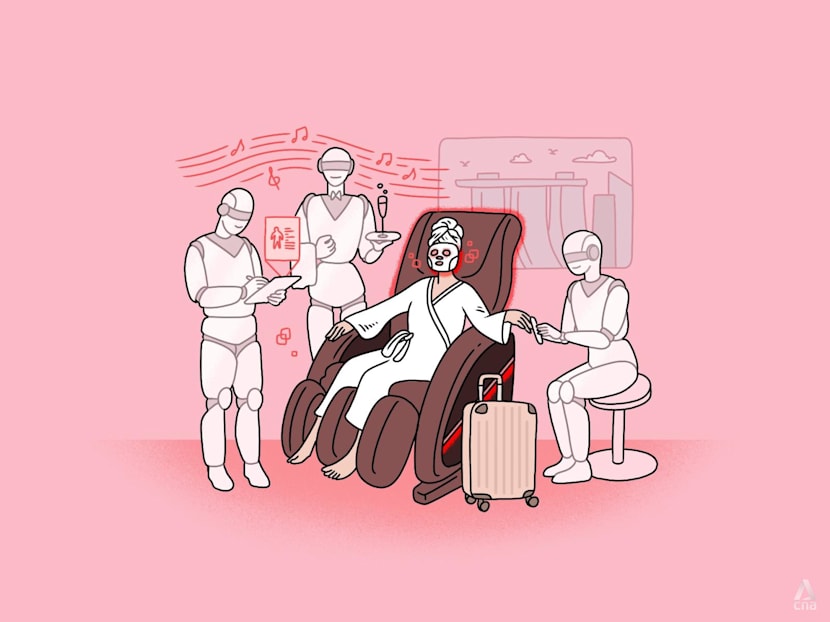
For many visitors, Singapore's general cleanliness, ease of getting around, and sense of safety and security are integral to their wellness experience because it offers them peace of mind, an analyst said. (Illustration: CNA/Nurjannah Suhaimi)

This audio is generated by an AI tool.
Mr Finn Bluemel, who was holidaying in Singapore this week, considers himself more of an adventurous traveller, but if the 39-year-old German were to take a wellness holiday to relax and unwind, he is unlikely to come here.
Instead, he would likely grab a surfboard and ride the waves in Bali, Indonesia.
As for 41-year-old physiotherapist Noelia Vaquero, a wellness retreat for her would mean setting up a beach chair along the coasts of Malaga or Marbella in her native Spain, as opposed to taking a 16-hour flight to Asia.
Singapore has tried positioning itself as an "urban wellness haven" for visitors in recent years, but for tourists such as Ms Vaquero, Mr Bluemel and a few others who spoke to CNA TODAY, "wellness" was not quite why they came to Singapore for a holiday.
The garden city's diverse architecture, gastronomic treats and proximity to other Asian destinations were much more of a draw.
The Singapore Tourism Board (STB) said in 2022 that it wanted to develop Singapore as a wellness tourism destination amid the growing popularity of the trend – travel focused on improving one's physical, mental and emotional well-being.
Global Wellness Institute (GWI), a United States-based nonprofit dedicated to research and education in the global wellness industry, said that there were more than one billion "wellness trips" made by travellers in 2023, with nearly 40 per cent of them travelling to the Asia-Pacific region.
Given the importance of tourism for Singapore, the Little Red Dot naturally wants a slice of the pie. However, with the wellness tourism landscape becoming increasingly competitive, analysts said that this may not be a walk in the park.
In addition to nations often associated with wellness travel such as India, Indonesia and Thailand, analysts told CNA TODAY that Malaysia, Sri Lanka and Vietnam have also thrown their name into the hat.
Furthermore, some of these nations have the advantage of having wellness offerings that are "culturally grounded" and are thus more authentic, one academic said.
Associate Professor Sin Harng Luh, provost's chair at the Singapore University of Social Sciences (SUSS), added that culture is central to how a place can brand itself as a wellness destination.
"Tourism works by being top of mind. When you think of beaches, you think of the Maldives; when you think of mountains, the Himalayas. In the same way, people need to know what a country or city is known for before they'd consider going there for wellness."
That is why practices such as ayurveda (a traditional herbal therapy system) in India, onsen (hot spring bath) and forest bathing in Japan, or Thai massage stand out, she said.
"They are rooted in culture and feel authentic."
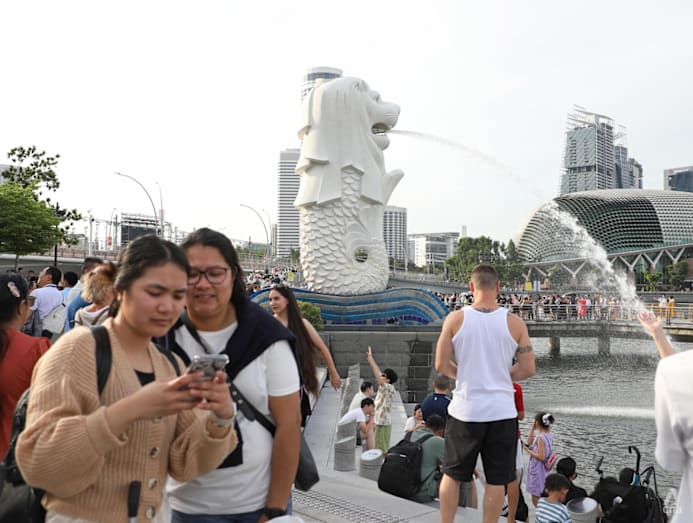
So what would authentic wellness look like in Singapore, a young nation known for being productive and hardworking, but also tired and burnt out?
Efficiency is part of it, naturally.
Ms Ashlynn Loo, director of land and concept development at STB, said Singapore's approach to wellness tourism leverages its identity as a "city in nature, where visitors can find respite within an urban landscape set amid lush greenery".
The point, she added, is to make accessible multifaceted wellness experiences, covering everything from mental and emotional well-being to fitness and lifestyle activities across the island.
"For visitors, especially those who are time-starved, this accessibility makes it effortless to incorporate wellness into their itinerary."
In recent years, the authorities have allocated more land space to facilitate such access.
Last year, the Singapore Land Authority and STB awarded the tender for wellness and fitness uses at 13 and 13A Dempsey Road to Power Moves, which has since started operations of its pilates studio, medical spa and aesthetic services.
Plots of land on Sentosa Island and in Marina South have also been earmarked for a wellness-themed hotel and a 4-hectare waterfront wellness attraction respectively.
STB said proposals for the Marina South project are being evaluated and more details will be shared upon award of the tender in 2026.
With a wealth of wellness offerings spread across the Asia-Pacific region, CNA TODAY examines how Singapore's "wellness at one's fingertips" strategy stacks up against its regional competitors, and whether this will be enough to enhance the nation's brand.
THE GLOBAL WELLNESS MOVEMENT
While leisure travel of all kinds is, at its core, a pursuit of well-being, "wellness" in the tourism industry refers largely to products and services such as spas, massages and retreats focused on health and well-being.
It also includes medical tourism, which can refer to cosmetic enhancement surgeries and healthcare check-ups.
The growth of this industry has even led to the emergence of niche offerings such as sleep tourism packages, with resorts around the world offering circadian lighting, soundproof rooms and "sleep coaching" to help guests improve rest and combat modern lifestyle challenges that include sleep deprivation.
Dr Guy Llewellyn, an assistant professor at the EHL Hospitality Business School in Singapore, said "digital detox resorts" are getting popular, too. These are resorts that promote an "unplugging mindset" by either collecting all electronic devices on arrival or limiting their usage to designated areas.
"They are designed for people to refocus, reduce stress and lower anxiety levels that come from constantly being connected, by encouraging yoga, meditation, activities and even group sessions to have face-to-face conversations."
For instance, Unplugged, a company in the United Kingdom, offers guests off-grid cabins surrounded by nature. In these cabins, guests have a phone lockbox to store their smartphones away, and an old-school "replacement Nokia" phone so that they may still reach cabin support during their stay.
GWI's figures showed that wellness tourism expenditure reached US$830 billion (S$1 trillion) in 2023, almost double from 2012, making it a lucrative sector, and tourism-dependent countries would ignore it at their own peril.
Ms Prudence Lai, Euromonitor International's travel analyst for Asia Pacific, said that the data analytics firm expects a 10 per cent year-on-year growth in wellness in-destination spending this year.
While undeniably large, the global wellness industry tends to be fragmented, with only a few players having been able to establish a presence across geographical boundaries.
Dr Llewellyn said some international brands such as Six Senses, Aman, Como Shambhala and Chiva-Som have successfully blended their wellness offerings with local environments to build strong reputations.
"These operators appeal to high-end travellers and are often considered benchmarks in the industry. For the most part, though, it is the smaller, independent properties that drive the sector's diversity."
That is because in each country, wellness offerings largely depend on its cultural heritage and geographical terrain.
Countries such as Zambia and Botswana in Africa have service providers that offer "yoga safaris" – a travel experience that combines wildlife viewing, in the form of a traditional safari, with daily yoga and meditation practices in natural settings.
Similarly, tourists may go on retreats in "alpine wellness hotels" that provide spa services in the Austrian Alps. The European country is known for its striking mountainous landscapes.
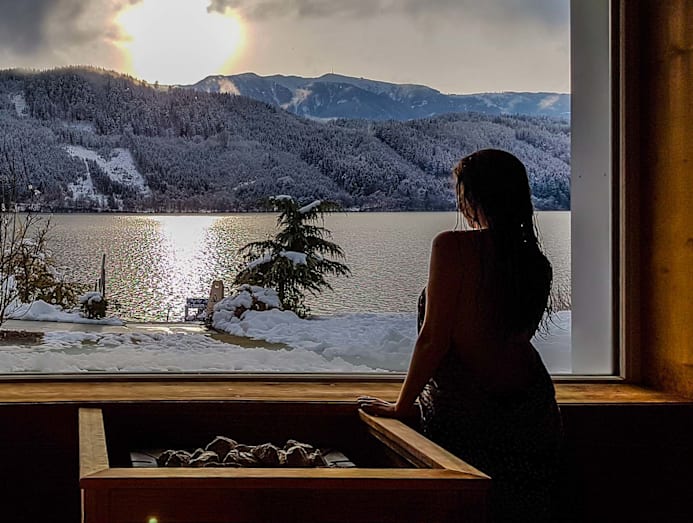
Closer to home, Bhutan's philosophy of Gross National Happiness means that wellness retreats there feel authentic, Assoc Prof Sin from SUSS said, since it is about immersing oneself in a culture that places joy at the core of its identity.
Then, it would be remiss not to mention the Indonesian island of Bali, which attracts millions of travellers each year. Not only does it boast pristine beaches and lush landscapes, but its wellness culture is deeply rooted in tradition and spirituality.
Many of the healing practices offered to tourists there are linked to centuries-old Balinese Hindu philosophy and local knowledge, incorporating rituals, meditation, herbal remedies and, more recently, yoga.
However, when it comes to wellness leaders in Southeast Asia, industry players and analysts alike agreed that Thailand comes up top.
Thailand had one of the fastest growth rates in wellness tourism spending, GWI said, doubling from 2022 to 2023 as the Asian travel market recovered from the COVID-19 pandemic.
The institute also said that Thailand was ranked 15th globally for wellness tourism expenditures in 2023 and fourth in Asia, just behind Japan, China and India. Notably, the wellness industries in these top three markets are significantly supported by domestic tourists, while Thailand's is primarily driven by foreign visitors.
Data from Euromonitor showed that total wellness expenditure in Thailand for 2024 was S$5.5 billion, and that is projected to reach around S$6 billion this year.
Ms Li Baidi, vice-president of commercial for travel platform Traveloka, believes that Thailand's reputation of being a global wellness destination was achieved through a mix of cultural heritage, innovation and investment.
"Thailand has a deep heritage of healing, mindfulness and well-being. Over time, it has successfully blended these traditions with modern facilities and holistic wellness treatments to create a wellness scene that is authentic, well-developed and high quality," she said.
Thailand’s uniqueness lies in its wide breadth of wellness environments, too.
From the world-class gastronomy, vibrant spa and beauty scene in urban Bangkok, to the serene, laid-back atmosphere of mountain and coastal towns such as Chiang Mai and Pattaya, these enable travellers to experience a highly developed modern city alongside diverse natural beauty, Ms Li added.
Chiang Mai, often called Thailand's cultural capital, offers "cultural therapy" tours where visitors may hike trails and enjoy hot springs surrounded by mountains and lush countryside. Pattaya is better known for its beaches and nightlife, but it is not difficult to find spas and traditional Thai therapy providers there.
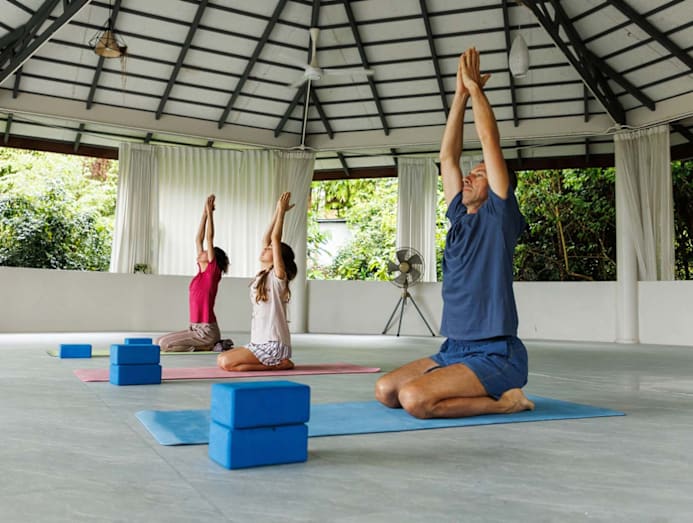
Thailand's beach resorts, long seen as places to unwind, have also expanded into full-fledged wellness hubs that reflect changing traveller demands.
In Phuket, this evolution is perhaps best captured by "Soi Taied", or "Fitness Street", a 1.5km street in the southern part of the island lined with Muay Thai camps, mixed martial arts (MMA) and CrossFit gyms, yoga studios and Brazilian Jiu-Jitsu schools. Alongside them, many cafes and restaurants focus on offering healthy, wellness-friendly food and drink that include vegan meals and acai bowls.
Over on the west coast of Phuket, the Bangtao Muay Thai & MMA gym has drawn growing numbers of travellers seeking active wellness experiences.
Since opening in 2022, it has attracted beginners and seasoned fighters alike with its short-term fitness retreats, as well as extended transformation programmes. Its marketing director Lewis Wilson said it now welcomes "thousands of international guests annually".
Its appeal, Mr Wilson said, lies in its quality coaching and community-driven atmosphere where guests train, heal and reset alongside residents and champions.
UP-AND-COMING WELLNESS DESTINATIONS
Beyond well-established players like Thailand, several new wellness destinations are emerging across Southeast Asia, where traditional practices remain deeply woven into daily life.
Malaysia and the Philippines are also markets to watch, with their growing potential to stake a stronger claim in the regional wellness landscape.
Mr Clint Nagata, founder of Blink Design Group, which has done work for wellness-focused hotels across Asia, said that countries such as Cambodia and Laos offer opportunities for authentic placemaking that goes "beyond surface-level cultural integration", giving travellers the chance to immerse themselves more deeply in native traditions.
"These destinations have wellness philosophies that haven't been commercialised to the point of losing their authenticity," he added.
Malaysia and the Philippines are also markets to watch, with their growing potential to stake a stronger claim in the regional wellness landscape.
Dr Jeetesh Kumar, head of research at the Faculty of Social Sciences & Leisure Management in Malaysia's Taylor's University, observed a noticeable increase in both international and domestic travellers seeking wellness experiences in the country.
Malaysia is leveraging its natural assets such as rainforests and highlands, along with cultural wellness traditions, to expand the sector, he said.
The Malaysian government has also increased its investment in wellness infrastructure and introduced initiatives aimed at enhancing the country's profile as a regional wellness destination, he added.
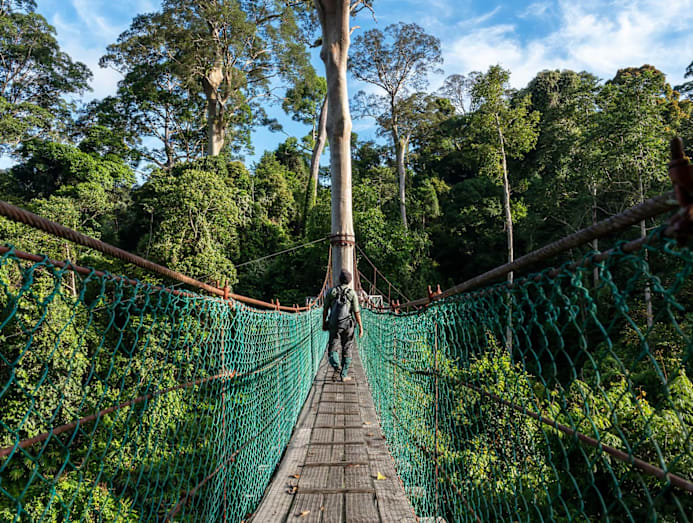
Destinations such as Sabah and Sarawak in East Malaysia are promoting nature-based retreats in their rainforests, while the Cameron Highlands is known for cool-climate wellness getaways.
Across the country, spa and retreat programmes often incorporate local practices, such as traditional Malay healing methods and ancient tea rituals.
As for the Philippines, pioneers such as The Farm at San Benito, a luxury medical wellness resort, are helping to shape its wellness identity.
The country's strengths lie in its biodiversity, English-speaking workforce and innate culture of care, which makes its wellness programmes both accessible and deeply personal for international guests, representatives from The Farm said.
Elsewhere, other emerging destinations in the Philippines such as Palawan and Siargao are tapping their own unique assets of lush islands and serene seaside settings, offering activities that include guided electric skateboarding and island-hopping retreats.
Government support, coupled with improved connectivity, is also boosting confidence in the Philippines' ability to grow as a credible, high-value wellness hub, they added.
Formed in August 2024, the Wellness Tourism Association of the Philippines is driving the country's rise as a wellness destination while promoting the Filipino brand of hospitality and healing.
Its efforts highlight local practices, for example, the "hilot" massage, which uses natural elements such as banana leaves and coconut oil to promote relaxation.
THE SINGAPORE BRAND OF URBAN WELLNESS
Singapore will never be, nor aspire to be, another Bali or Phuket. This was what STB's then chief executive officer Keith Tan said at its inaugural Wellness Symposium in 2022.
After all, the country lacks sprawling beach resorts and suitable sites for remote retreats.
However, Singapore can still differentiate itself from others by leveraging its existing strengths.
Mr Joshua Loh, the chair for Ngee Ann Polytechnic's tourism and resort management course, said: "For many visitors, Singapore's general cleanliness, ease of getting around, and sense of safety and security are integral to their wellness experience because it offers them peace of mind."
Instead of an extended wellness retreat, the close concentration of wellness offerings is suited for those who may be "resource-rich but time-poor", he added.
The point of differentiation, Assoc Prof Sin of SUSS said, is weaving in wellness services all across the high-density island.
STB indicated that this has been, and will continue to be, Singapore's strategy.
Data from Euromonitor showed that total wellness expenditure in Singapore – including both domestic and tourist spending – stood at S$603 million in 2024. That figure is projected to reach S$925 million this year.
Ms Loo of STB told CNA TODAY that the agency aims to increase the supply and diversity of quality wellness products across the country.
This includes offering science-backed wellness and longevity experiences, which builds on the nation's reputation for having world-class healthcare standards and rigorous regulatory oversight, she said.
In tangible terms, this could mean the offering of new wellness products aided by technology.
For example, the InterContinental Singapore was the world's first luxury hotel to introduce in-room soundbars with neuroacoustic technology – which uses specific sound frequencies to synchronise brain waves – so guests may attain deeper, more restful sleep.
At the Grand Hyatt Singapore, its Damai spa features signature treatments that blend advanced sensory technologies with science-led recovery methods.
These include a deep recovery programme that utilises far-infrared heat, LED light therapy and negative air ion therapy to alleviate fatigue and jet lag, as well as detoxification treatments using sound frequencies and therapeutic vibrations.
The hotel also has a suite of thermal-hydro facilities, such as a halo steam room infused with aromatic salt particles to enhance respiratory function, and a Hyrox-accredited training facility in line with the growing popularity of the fitness competition.
Over at Como Orchard, guests may use its hyperbaric oxygen chambers and red light therapy rooms to support the body's natural healing processes, or enrol in an extensive range of wellness and fitness programmes at its wellness centre.
EXPENSIVE AND INAUTHENTIC, OR PREMIUM AND NOVEL?
Although the price tags on these specific types of wellness products in Singapore might suggest they are intended more for affluent business travellers and luxury-leisure tourists, analysts said that this may not necessarily be a bad thing.

Mr Loh from Ngee Ann Polytechnic said that the wellness offerings here may be priced higher than those in neighbouring countries, but the convenience and the ability to provide a "quick recharge" is exactly what sets Singapore apart.
Even then, with a strategy predicated on novel and cutting-edge wellness products, is there a danger that they will lose their appeal over time, compared to more traditional treatments and practices with a deep heritage?
There is some risk of that, one analyst suggested. Mr Qamarzeb Aurangzeb, programme manager of hospitality and tourism at the Management Development Institute of Singapore (MDIS), said: "Unlike traditional wellness practices, which carry cultural depth and emotional resonance, tech-driven treatments can feel transactional if not thoughtfully designed.
"However, Singapore's strength lies in its ability to innovate continuously. By evolving its offerings – such as incorporating AI diagnostics, personalised therapies, or blending tech with holistic elements – Singapore can maintain its edge."
Wellness providers themselves said they were also not overly concerned.
Grand Hyatt Singapore's hotel manager Timothy Parr, for instance, said its goal is "not merely to keep up with the latest technology for the sake of it".
"Wellness trends will evolve, and we see innovation as a necessary complement to traditional, results-backed approaches. The goal is to find the balance that brings the greatest benefit to our guests."
Then, there is also the perception that Singapore is a city where people have high stress levels; numerous workplace wellness surveys in recent years have highlighted how burnt out workers were.
Compared to places like Thailand, India, or Indonesia, where wellness is deeply rooted in tradition and spirituality, Singapore may seem less authentic.
In August 2024, a survey of workers here by human resource solutions firm Employment Hero found that 61 per cent of the respondents experienced burnout because of work in the three preceding months.
Another survey last year found that two-thirds of workers reported at least one of three indicators of burnout.
Hence, a tourist might be forgiven for asking: If I am looking to recharge, why go to a city known for its stress?
Mr Qamarzeb said that Singapore's reputation as a fast-paced, high-pressure city does present a challenge in positioning itself as a wellness destination.
"Compared to places like Thailand, India or Indonesia, where wellness is deeply rooted in tradition and spirituality, Singapore may seem less authentic," he said.
For some tourists, though, that is a moot point.
Mr Michael Lisiewicz, a 36-year-old airline engineer from Germany who was in Singapore for a week-long holiday, said a nation's reputation of being a place where people are stressed or burnt out has no bearing on whether or not it can brand itself as a wellness destination.
"Even in Germany or Switzerland, which has beautiful Alps and panoramic views, if you ask the residents, they will also (say they are) stressed because they work hard jobs.
"But people going to the spas and resorts will still say it's great, and they feel relaxed coming out of it," he added.
Furthermore, Singapore is not known only for how busy and stressed its workers are.
The nation was recently designated a "Blue Zone", a term used to describe regions where people live longer and have healthier lives.
Mr Allen Law, a venture capitalist in the wellness space and principal of Seveno Capital, a venture capital fund, said the nation can leverage this reputation for an "evidence-based approach to wellness".
For tourists, this means that the wellness experience, which can range from personalised health assessments to DNA-based nutritional recommendations, is not just about relaxation but measurable health outcomes, he added.
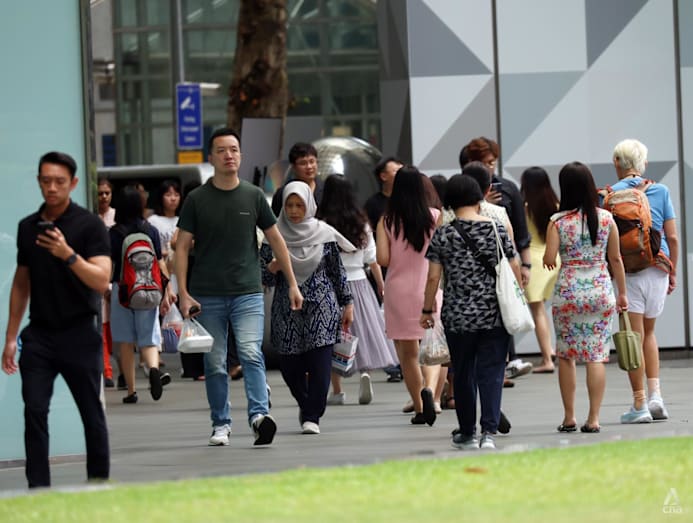
What is more, wellness tourism can be more broadly defined beyond advanced treatments and costly procedures, Mr Loh from Ngee Ann Polytechnic said, pointing to Singapore's "city in nature" setting.
"For example, the extensive network of park connectors, accessible nature areas like MacRitchie Reservoir and Bukit Timah Nature Reserve, and well-maintained park facilities offer visitors the chance to experience nature and the outdoors while having access to a variety of food-and-beverage options."
And under this broader umbrella of wellness, "mara-cations" are gaining pace. Last year's Standard Chartered Singapore Marathon saw a 85.7 per cent increase in overseas participants (from 7,000 in 2023 to 13,000 in 2024) with strong participation from China, Indonesia, Malaysia and the Philippines.
WELLNESS BEYOND THE RESORT
STB has also been exploring large-scale wellness events as a means to establish Singapore as a wellness destination. First, with the launch of the Wellness Festival Singapore in 2022, and then partnering with insurance conglomerate Prudential for the Glow Festival since last year.
Last year, the Glow Festival featured 78 classes, four immersive installations and a bazaar, attracting more than 33,000 visitors. Of these, around 27 per cent were foreigners.
In April this year, both overall visitorship and foreign visitor attendance to the festival rose: Of the 40,000 attendees, 40 per cent came from abroad.
Ms Tan Ting Yu, founder of yoga studio Wild Fig Yoga, which has taken part in the Glow Festival for the past two years, said she met overseas visitors who had travelled specifically to Singapore for sessions with well-known instructors during the 2024 festival.
The growing interest from not only international visitors but also residents here is also aided by Singapore's expanding definition of wellness, which is no longer confined to large-scale festivals, yoga or spa treatments.
For some organisations, the future of wellness lies in smaller, more intimate spaces rather than large-scale events.
Stranger Conversations, for example, is an organisation here that aims to help urbanites recharge in ways that feel meaningful and personal.
Its founder, Mr Ang Jin Shaun, 46, observed that the COVID-19 pandemic created conditions for reflection, prompting many people to re-evaluate their priorities in life.
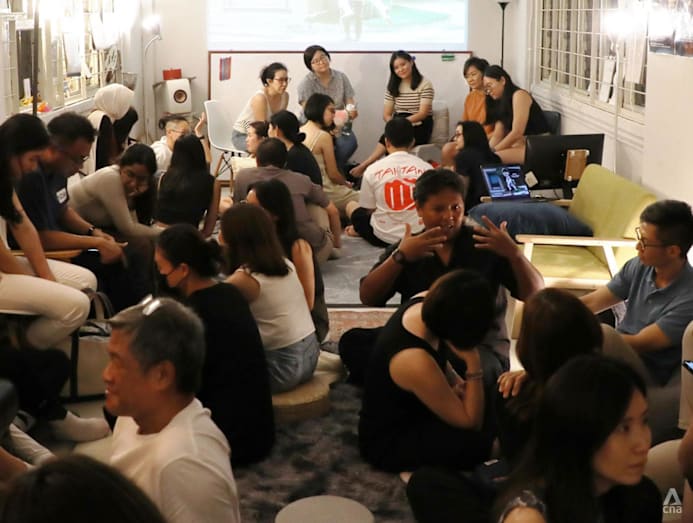
Where restoring one's well-being is typically associated with disconnecting oneself from hectic routines and doing less, Stranger Conversations believes that one can feel reinvigorated by doing activities or connecting with causes that resonate.
Some of these activities include casual socials, group therapy sessions, workshops, panel discussions and charity events, covering topics from career breaks to learning how to DJ.
"In a society where so many people are caught up in making money and climbing the corporate ladder, more people are becoming aware that this alone isn't enough to give you a holistic sense of wellness," Mr Ang said.
"Up to a certain point, wellness cannot be bought anymore."
Such city-based wellness initiatives have also attracted some foreign visitors. While most community members are Singapore residents, Mr Ang recalled how a tourist from China made Stranger Conversations' communal living room her first stop in Singapore after discovering it online.
Given Singapore's high costs, it could well be the case that the country's wellness offerings will continue to attract mainly domestic residents, but this is not necessarily a bad thing, Mr Qamarzeb from MDIS said.
Even though Singapore's wellness tourism should ideally be driven by both domestic engagement and international interest, strong domestic demand would still be a mark of success in terms of public health, lifestyle branding and hospitality innovation, he added.
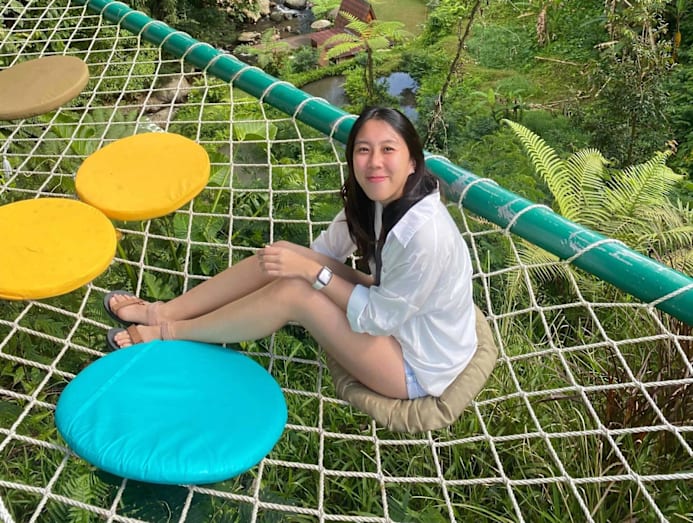
At least one resident and wellness traveller agreed that in some cases, Singapore is as good a place as any to regain a sense of well-being.
Ms Vernessa Quek, 29, a senior associate in the aviation industry, attended a wellness retreat in Bali in 2023. The four-day retreat had been organised by Singaporeans and the participants all came from Singapore.
During the retreat, the group followed a daily programme of activities, including forest bathing, yoga sessions, Balinese cooking classes and picnics in the gardens. The respite was a good recharge for Ms Quek, but she felt that the experience could have also taken place in Singapore, pointing to lush areas such as the Dempsey enclave as options.
She explained that her choice of an overseas retreat was driven by the desire for a change of environment, a way to disconnect fully from daily routines and distractions.
Still, she sees potential in retreats held here, particularly for those reluctant to commit to flights and accommodation abroad without first testing the experience.
"I think Singapore has the resources and community to offer a similar wellness experience," she said.
















